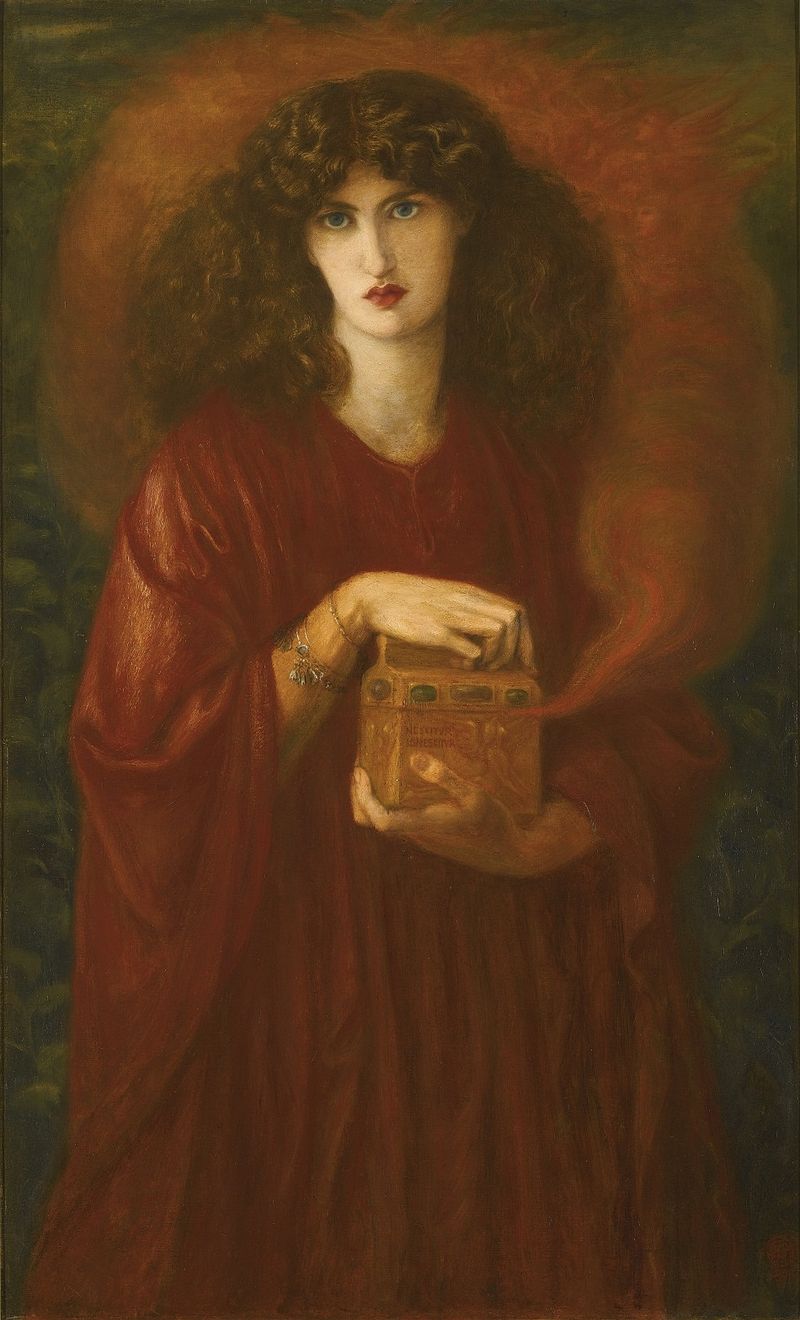
Dante Gabriel Rossetti, Pandora, 1871 (Wikimedia, Public Domain)
Once upon a time a woman of unique gifts opened a jar and released all the evils on humanity. Only hope was left. The myth of Pandora’s notorious box is one of the ancient answers why there is evil in this world. The bad voice of Pandora continued into the Renaissance, but the jar or pithos from the ancient times became a mysterious box. It became an object of interest for artists of Renaissance and an excellent example of interaction of something human and something divine.
She Who Sends Up Gifts
According to myth, when Prometheus stole the fire from heaven, Zeus was furious and he wanted to take revenge. So, he met Pandora, “she who sends up gifts”, with Prometheus’ brother Epimetheus. Very soon after, she got the jar in her care and opened it, releasing all the evils into the world. Only hope was left behind. Shortly, this is how the idiom “to open Pandora’s box” is created. Many people open “Pandora’s box” also today, starting something that causes many problems that cannot be controlled any longer.

Jar, Pithos, Box
In Ancient Greece pithos was a large jar usually containing wine, oil or grain. Pandora’s jar or pithos became a “box” for the first time in the 16th century when Erasmus, a humanist who wrote a Latin version of the Pandora’s story, mistranslated pithos as pyxis which means a “box”.
Rebirth after the Middle Ages
Following the Middle Ages, the Renaissance was the era of rebirth of humanity. The artists expressed strong interest in individual experience and humanizing the divine. Being divine and mysterious made a man more beautiful. Or humanized divine. The natural was beautiful. The natural was mysterious. The natural was worthy to explore.
What Was in the Jar? Or Box?
Sickness, famine, war, death and other evils aren’t beautiful. That fact made the artists question the mystery of Pandora’s box. Therefore, during the Renaissance there were alternative versions of the box containing virtues and blessings. One version also says Epimetheus, “the foolish man”, opened the jar and let the “gifts of the gods” escape. The writers Andrea Alciato and Gabriele Faerno emphasized that Hope only remained. No matter what type of art there was, the “content of the box”, the “gifts” are depicted as humans. Their depictions are inspired by great Greek and Roman classical works. The escaping virtues, for example, emphasize the classical beauty presented with the new techniques such as sfumato to tell a story about the beauty of human and divine.
Ivana Tucak
One thought on “Pandora’s Box: How a Notorious Jar Became Divine?”